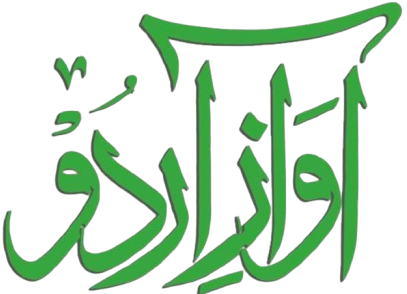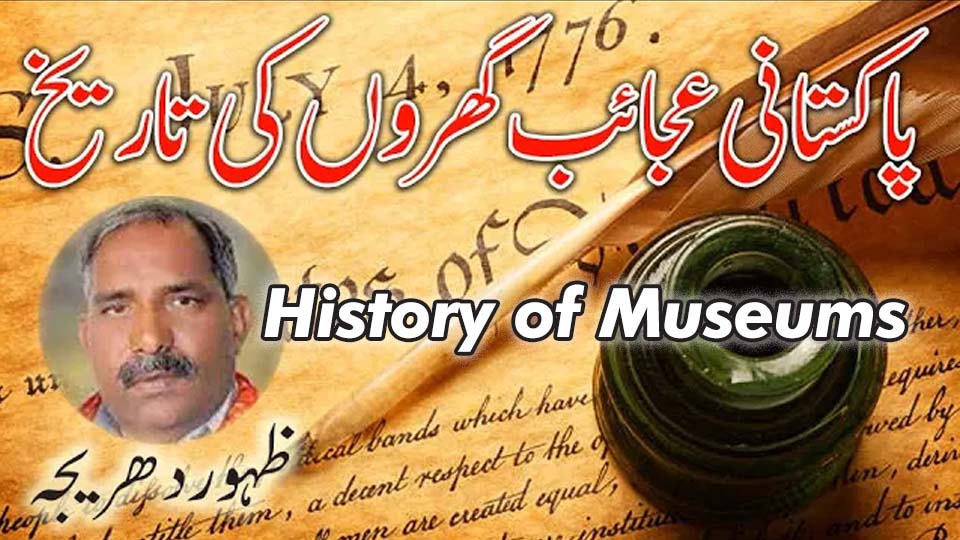Introduction: Why Museums Matter
History of Museums in Pakistan is ultimately a story about memory, identity, and public education. Museums safeguard artefacts, interpret complex pasts, and connect citizens with heritage. Around the world, we see national, regional, science, art, and community museums driving tourism, scholarship, and cultural pride. In this very context, renowned columnist Zahoor Dhareeja wrote an informative article in Daily 92 News on December 14, 2020, highlighting the evolution and challenges of Pakistani museums.
The Museum Landscape at Partition
History of Museums in Pakistan begins in 1947 with six museums in the new state. Four—Karachi, Lahore, Peshawar, and Taxila—stood in West Pakistan, while the Varendra Research Society Museum and the Dhaka Museum were in East Pakistan. Early priorities were simple yet ambitious: expand collections, formalize curation, and build public access for a nation defining itself through tangible heritage.
Karachi’s National Museum: From Victoria to the Nation
Before independence, Karachi’s oldest museum took shape in 1851, initially named for Queen Victoria, placed under Karachi Municipality in 1870, and shifted to a new building in 1928. Post-1947, when that building hosted the State Bank office, the museum needed a new home. On 17 April 1950, Governor-General Khawaja Nazimuddin inaugurated the National Museum of Pakistan in the then Frontier/Frere Hall building—an inflection point in the History of Museums in Pakistan.
Today, its four core galleries—Prehistory, Gandhara, Hindu, and Islamic—are supported by manuscripts, calligraphy, coins, photographs, and Pakistan Movement documents. The strength of this independence-era archive is notable. Yet one gap persists: the Seraiki belt’s material culture remains underrepresented.
Lahore Museum: Scale, Splendour, and Scholarship
Lahore Museum, the country’s largest by range and depth, emerged from an industrial exhibition held at Tollinton Market in 1864. In February 1890, Prince Albert Victor laid the foundation stone of the present building; by 1892, the museum moved into its now-iconic home. With holdings spanning archaeology, numismatics, sculpture, textiles, and royal regalia, the Lahore Museum exemplifies how the History of Museums in Pakistan intersects with art history and nation-building.
Peshawar Museum and the Gandhara World
Established in 1906 in Victoria Memorial Hall, opposite the Governor’s House, Peshawar Museum anchors the Gandhara narrative. Pilgrims and scholars alike visit to see Buddhist sculpture, narrative panels, and the famed Kanishka-era material uncovered in 1908–1909 at Shah-ji-ki-Dheri. As a living bridge between archaeological science and public audiences, it illuminates why the History of Museums in Pakistan draws global interest.
Federal Archaeology Hubs: Taxila, Harappa, and Beyond
The Department of Archaeology developed a network that includes Taxila, Harappa, Saidu Sharif (Swat), Umerkot, Banbhore, and Mohenjo-daro—sites that stitch together Indus, Gandhara, Islamic, and early modern layers. Add Lahore Fort Museum, Allama Iqbal Museum (Javed Manzil), Sibi Museum, and the Quaid-e-Azam Museum in Karachi, and you get a national canvas where the History of Museums in Pakistan is curated for classrooms, families, and travelers.
Sindh Museum’s Treasure: A Scholar’s Library
Hyderabad’s Sindh Museum houses a remarkable gift—the personal library of Shams-ul-Ulama Dr. Umar bin Muhammad Daudpota—some 55,000 volumes spanning Sindhi, Urdu, English, Persian, and Arabic. It’s a research trove that shows museums can also be intellectual engines, not just display spaces.
Universities, Colleges, and Specialist Collections
Pakistan’s ecosystem expanded from four post-Partition museums to roughly five dozen museums and art galleries across cities. Noteworthy examples include the National Museum of Science & Technology (UET Lahore), Shakir Ali Museum, Chughtai Museum (Lahore), Pakistan Forest Museum (Abbottabad and Peshawar), Islamia College Museum (Peshawar), Air Force Museum (Peshawar), Archaeological Museum (University of Peshawar), Botanical Museum (Gordon College Rawalpindi), Army Museum (Rawalpindi), Archaeological and Natural History Museums (University of Karachi), Pakistan Maritime Museum (Karachi), Education Museum (University of Sindh), Bhit Shah Cultural Museum, Mangla Dam Site Museum, and the Geological Museum (Quetta).
The Missing Map: Seraiki Belt and Regional Equity
For all the growth, regional balance still lags. Multan, Dera Ghazi Khan, Dera Ismail Khan, Sahiwal, Jhang, and Mianwali deserve dedicated provincial or city museums. Without Seraiki-belt coverage, the History of Museums in Pakistan remains incomplete. Preserving artifacts, oral histories, and crafts from these districts would correct historic neglect and add powerful local narratives to the national story.
Why Preservation and New Museums Matter
Museums are public classrooms. They spur tourism, inspire artisans, seed school curricula, and accelerate research. Investing in conservation labs, climate-controlled storage, digitization, and inclusive curation ensures that the History of Museums in Pakistan is not just protected but also shared widely—across languages, regions, and generations.
Conclusion: From Neglect to Renewal
To turn forgotten glory into living heritage, Pakistan needs a two-track approach: elevate national flagships and simultaneously fund regional museums—especially in the Seraiki belt. Community participation, accessible interpretation, and digital outreach can transform static collections into dynamic learning. That is how the History of Museums in Pakistan moves from loss to leadership.
If you’d like to listen to this Essay in audio format, click the CONTACT button below to get in touch with the AwazeUrdu team to order the audiobook.
You can also watch the same video on these social media platforms.
If you care about safeguarding Pakistan’s story, support your local museum—donate a family artifact ethically, volunteer for cataloging drives, or advocate for new institutions in Multan, DG Khan, DI Khan, Sahiwal, Jhang, and Mianwali. Heritage saved today becomes identity secured tomorrow.
پاکستان میں عجائب گھروں کی تاریخ۔
جناب ظہوردھریجہ کا یہ مضمون روزنامہ92میں14دسمبر2020ءکوشائع ہوا۔اس میں پاکستان کےتقریباًتمام عجائب گھروں کےبارے میں معلومات مختصراًبیان کی گئی ہیں۔
“قیام پاکستان کے وقت پاکستان کے حصے میں چھ عجائب گھر آئے، جن میں سے چار یعنی کراچی، لاہور، پشاور اور ٹیکسلا مغربی پاکستان اور دو یعنی وریندر ریسرچ سوسائٹی میوزیم اور ڈھاکہ میوزیم مشرقی پاکستان کے حصے میں آئے۔ ان عجائب گھروں کو ترقی دینے کا مرحلہ در پیش تھا۔ قدیم ترین عجائب گھر کراچی کا ہے۔ یہ 1851ء میں ملکہ وکٹوریہ کے نام سے قائم کیا گیا تھا۔ 1870ء میں وکٹوریہ میوزیم کو بلدیہ کراچی کے زیر انتظام کر دیا گیا۔ بلدیہ نے 1928ء میں اسے ایک نو تعمیر عمارت میں منتقل کر دیا۔ قیام پاکستان کے بعد جب اس عمارت میں سٹیٹ بینک آف پاکستان کا دفتر کھولا گیا تو عجائب گھر کے لیے نئی جگہ کی ضرورت محسوس ہوئی۔ 17 اپریل 1950ء کو گورنر جنرل خواجہ ناظم الدین نے فرنٹیئر ہال میں ’’نیشنل میوزیم آف پاکستان‘‘ کا افتتاح کرکے قومی ورثے کو محفوظ بنانے کے عمل کو آگے بڑھایا۔ یہ درست ہے کہ قومی عجائب گھر میں چار گیلریاں ہیں، ایک گیلری زمانہ قبل تاریخ کے لیے مخصوص ہے، دوسری گندھارا کے لیے، تیسری ہندو دور کے لیے اور چوتھی اسلامی دور کے لیے۔ مخطوطات، تصاویر، خطاطی کے نمونے، سکے اور دوسرے نوادرات موجود ہیں۔ تحریک پاکستان سے متعلق تاریخی دستاویزات، تصاویر اور نوادر کا جتنا اچھا ذخیرہ اس میوزیم میں ہے شاید کسی اور میوزیم میں نہیں ہے۔ جب ہم وسیب کو دیکھتے ہیں تو قومی میوزیم میں سرائیکی وسیب کا کوئی علاقہ نظر نہیں آتا۔ تاہم سر سید، مسلم لیگ اور تحریک خلافت سے متعلق قابل ذکر دستاویزات موجود ہیں۔لاہور میوزیم آثار قدیمہ، فنون لطیفہ، سکہ سازی، مجسمہ سازی، شاہی ملبوسات اور تاریخ ہندو پاک کے بعض اہم و نادر و عجائبات کے ذخیروں کے لحاظ سے پاکستان کا سب سے بڑا عجائب گھر ہے۔ اس کا آغاز 1864ء میں ایک صنعتی نمائش سے ہوا تھا جو ٹولنٹن مارکیٹ میں 20 جنوری 1864ء سے اپریل کے پہلے ہفتے تک جاری رہی۔ جنوری 1890ء میں پرنس البرٹ وکٹر لاہور کے دورے پر آیا اور اسے ہاتھی پر بٹھا کر شہر میں جلوس نکالا گیا۔ اس نے 3 فروری 1890ء کو موجودہ عمارت کا سنگ بنیاد رکھا۔ ں1892ء میںعمارت کی تعمیرو تکمیل کے بعد عجائب گھر کو یہاں منتقل کر دیا گیا۔ ابھی ضرورت اس بات کی ہے کہ قومی عجائب گھروں میں سرائیکی وسیب کو شامل ہونا چاہئے کہ سرائیکی خطہ دنیا کے قدیم ترین خطوں میں شمار ہوتا ہے۔ کہا جاتا ہے کہ سندھ میوزیم کا امتیازی وصف شمس العلماء ڈاکٹر عمر بن محمد دائود پوتہ کا عطیہ کردہ ذاتی کتب خانہ ہے جو55 ہزار کتب پر مشتمل ہے جو سندھی، اردو، انگریزی، فارسی اردو، عربی زبانوں کی نادر و نایاب کتب پر مشتمل ہے۔ یہ ذخیرئہ کتب تحقیق کرنے والے طلبہ کے لیے ایک انمول تحفہ ہے۔پشاور میوزیم 1906ء میں وکٹوریہ میومریل ہال میں قائم کیا گیا تھا اور اب گورنر ہائوس کے سامنے واقع ہے۔ گندھارا تہذیب کا مرکز ہونے کی وجہ سے پشاور کے عجائب گھر میں اس تہذیب سے متعلق بہترین آثار موجود و محفوظ ہیں۔ گوتم بدھ کے قدیم ترین مجسموں کی زیارت کے لیے دنیا بھر سے ان کے پیروکار آتے رہتے ہیں۔ اس میوزیم کا سب سے بیش قیمت ذخیرہ کنشک خاندان کے آثار ہیں جو 1908ء اور 1909ء کی کھدائیوں کے دوران شاہ جی کی ڈھیری کے کھنڈرات سے برآمد ہوئے تھے۔ قیام پاکستان کے وقت یہاں صرف چار میوزیم تھے، اب تقریباً 57 میوزیم اور آرٹ گیلریاں ہیں جو پاکستان کے مختلف شہروں میں موجود ہیں۔ ان میں سے زیادہ اہم اور قابل ذکریہ ہیں:مرکزی حکومت کے زیر انتظام عجائب گھر یہ ہیں: نیشنل میوزیم آف پاکستان کراچی، محکمہ آثار قدیمہ کے تحت عجائب گھر ٹیکسلا، ہڑپ، سیدو شریف، عمر کوٹ، بھنبھور اور مونجو دڑو میں قائم ہیں۔ لاہور فورٹ میوزیم، علامہ اقبال میوزیم، لاہور، سبی میوزیم، سبی بلوچستان، قائد اعظم میوزیم کراچی۔ ضرورت اس بات کی ہے کہ اس لسٹ میں ملتان عجائب گھر کا اضافہ ہونا چاہئے۔ مرکز کے علاوہ جب ہم صوبے کی طرف آتے ہیں تو دیکھتے ہیں کہ صوبائی حکومتوں کے زیر انتظام عجائب گھر: لاہور میوزیم، بہاولپور میوزیم، پشاور میوزیم، کوئٹہ میوزیم، بہاول پور میوزیم، پشاور میوزیم، کوئٹہ میوزیم، دیر میوزیم، چک درہ۔ سندھ میوزیم، حیدر آباد۔جامعات، کالجوں اور اداروں کے اپنے قائم کردہ عجائب گھر: زرعی عجائب گھر، لاہور، انڈسٹریل و کمرشل میوزیم لاہور، نیشنل میوزیم آف سائنس اینڈ ٹیکنالوجی، انجینئرنگ یونیورسٹی لاہور، شاکر علی میوزیم لاہور، چغتائی میوزیم لاہور، پاکستان فارسٹ میوزیم، ایبٹ آباد و پشاور، اسلامیہ کالج میوزیم پشاور، ایئر فورس میوزیم پشاور، اسلامیہ کالج میوزیم پشاور، ایئر فورس میوزیم پشاور، آرکیالوجیکل میوزیم، پشاور یونیورسٹی۔ بونینکل میوزیم، گورڈن کالج، راولپنڈی، آرمی میوزیم راولپنڈی۔ آرکیالوجیکل میوزیم، جامعہ کراچی، نیچرل ہنٹری میوزیم، جامعہ کراچی۔ پاکستان میری ٹائم میوزیم کراچی۔ ایجوکیشن میوزیم سندھ یونیورسٹی، حیدر آباد۔ بھٹ شاہ کلچرل میوزیم، بھٹ شاہ، ڈیم سائٹ میوزیم، منگلا ڈیم۔ جیو لوجیکل میوزیم، کوئٹہ۔صوبائی حکومتوں کی اس تمام لسٹ میں بہاولپور کے علاوہ ملتان، ڈیرہ غازیخان، ڈی آئی خان، ساہیوال، جھنگ اور میانوالی کے نام نظر نہیں آئے حالانکہ ان تمام علاقوں میں میوزیم عجائب گھر بنانے کی ضرورت ہے کہ وسیب کے آثار قومی ورثہ ہیں اور پاکستان کا سرمایہ افتخار ہیں۔ وسیب محرومیوں کا شکار ہے۔ جہاں دوسرے شعبہ جات میں وسیب سے امتیازی سلوک ہوا ہے اسی طرح وسیب کے قدیم آثار بھی ختم ہو رہے ہیں۔ مرکزی اور صوبائی حکومت کو اس اہم ورثے کی طرف توجہ دینے کی ضرورت ہے۔

